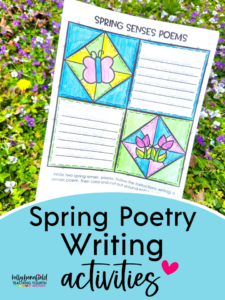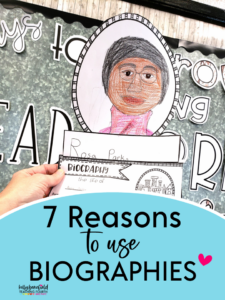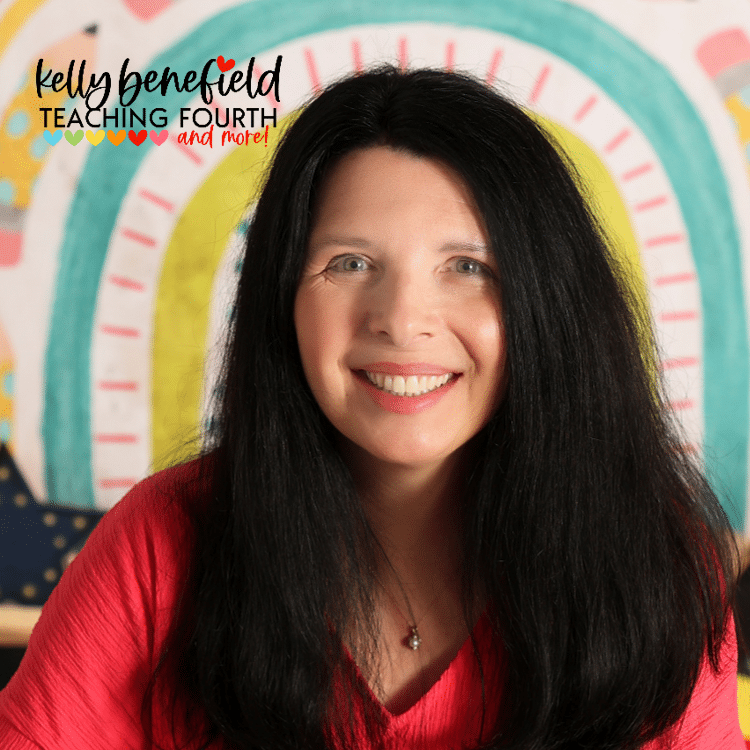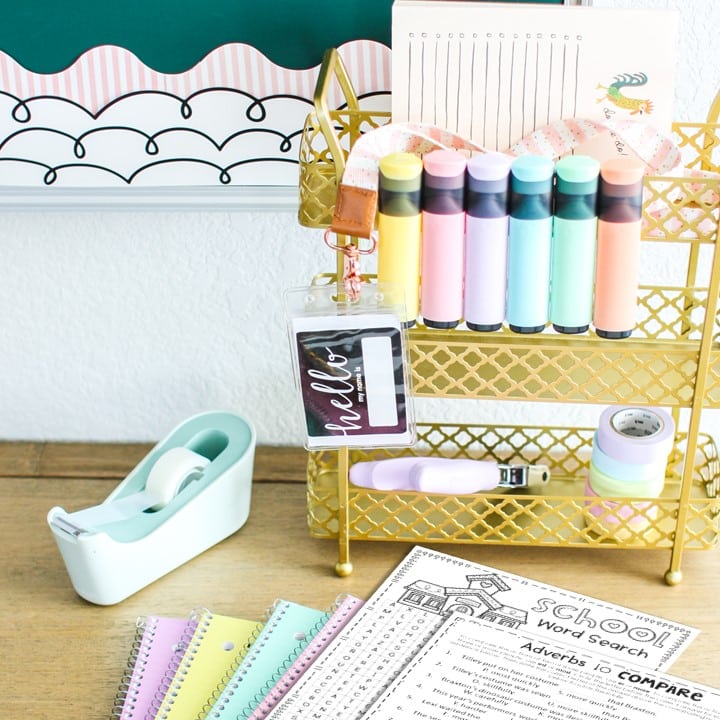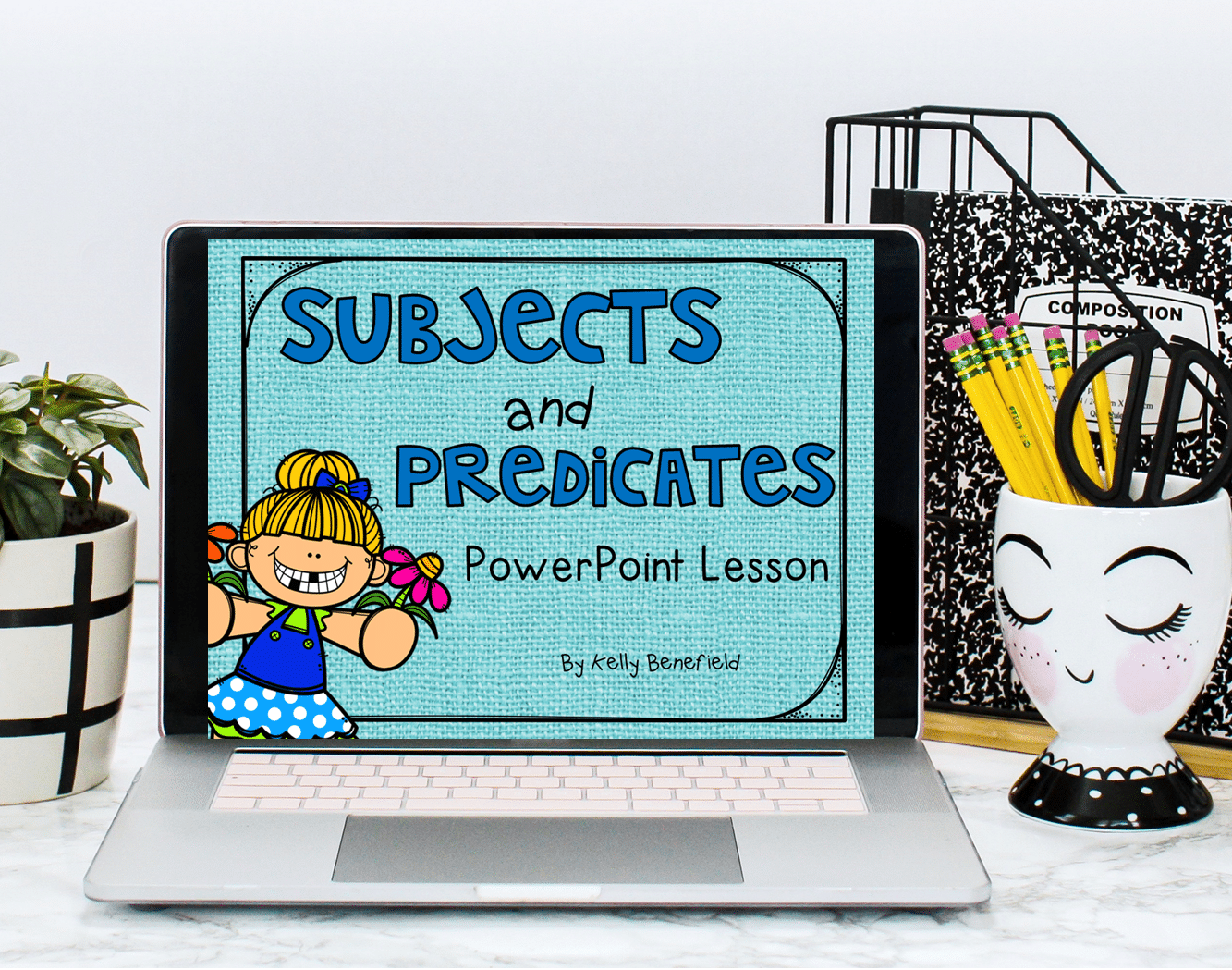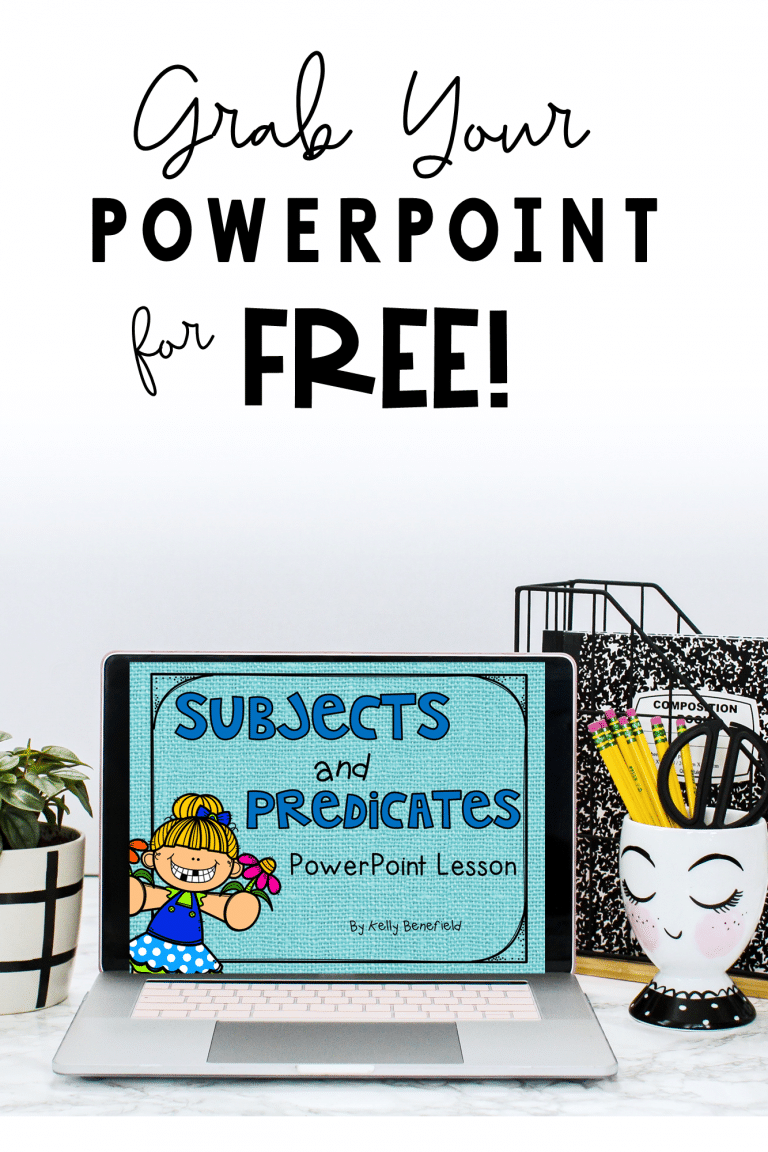Helping our upper elementary students develop comprehension skills is a complex task. One step in this task is teaching story elements. Find ideas for teaching story elements with your upper elementary students.
On the basic level, students must be able to identify key story elements when they read: character, setting, plot, conflict, solution, and theme. On a deeper level, students should understand how these elements contribute to the story’s overall meaning, the connections they have with one another, and how each element moves the plot or is important to the story.
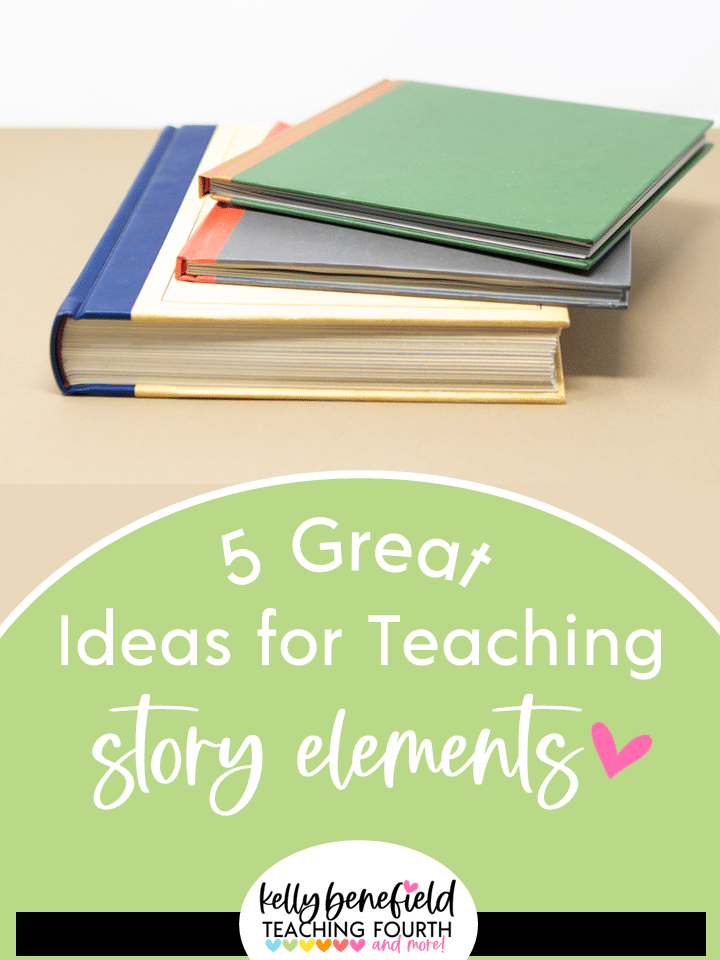
The 5 Key Story Elements Taught in Upper Elementary
The 5 key story elements taught in upper elementary include
- character – who or what the story is about. Characters are most often people or animals. Characters speak the dialogue and perform the actions in a story that moves a story’s plot forward.
- setting– Setting can refer to time and place or the where and when of a story.
- plot– refers to what happens in a story. It consists of an introduction, rising action, climax, falling action, and resolution.
- conflict– This is the problem or challenge that drives the story.
- theme– This story element usually must be inferred from events and dialogue in the story. It is the message that the author is trying to convey through the story.
Understanding story elements and how they drive the story leads to deeper levels of comprehension. Here are 5 ideas for teaching story elements.
Ideas for Teaching Story Elements
Picture Books
Picture books are one of the best tools in my opinion for ideas for teaching story elements. Using picture books or mentor texts during a read-aloud is a great way to help students identify and discuss story elements. After introducing each story element and its definition, choose a text that easily conveys each story element. Then read aloud the text to the whole class.
Model thinking and identifying each story element. You may even want to divide the book into sections and model only one element each day as a mini-lesson or an introduction.
There are so many wonderful picture books that can be used to teach story elements. See my next blog post for a few of my all-time favorites!
Post It Notes
Give each student 3 different colors of sticky notes and explain that each color will represent a certain story element ex.: character, setting, plot. Begin reading aloud a picture book. As you read, students will write to identify each story element on the appropriate colored sticky note. Once complete, share a few sticky notes for each element and place all sticky notes on an anchor chart titled with the story element.
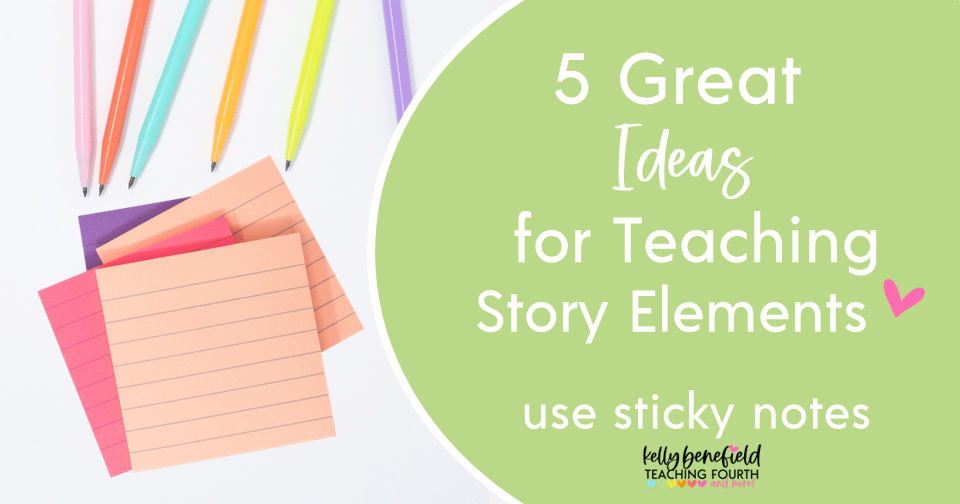
Flipbooks
Another great activity to use when teaching story elements are flipbooks. If you know me, then you know that I love using flipbooks in lessons! They are a simple way to create excitement about a lesson.
Have students fold a plain white piece of paper into a “hotdog”. (That simply means to fold the paper down the center so that it is a long rectangle.) Students then use scissors to cut 3 times to make 4 flaps.
Label each flap character, setting, problem, and solution. After reading a short story, a read-aloud, or a group reading, students may complete the flipbook by drawing a picture of each element on the front of the flap. Under the corresponding flap, students write a paragraph to explain the details about the character in the story, the setting of the story, the problem, and the solution.
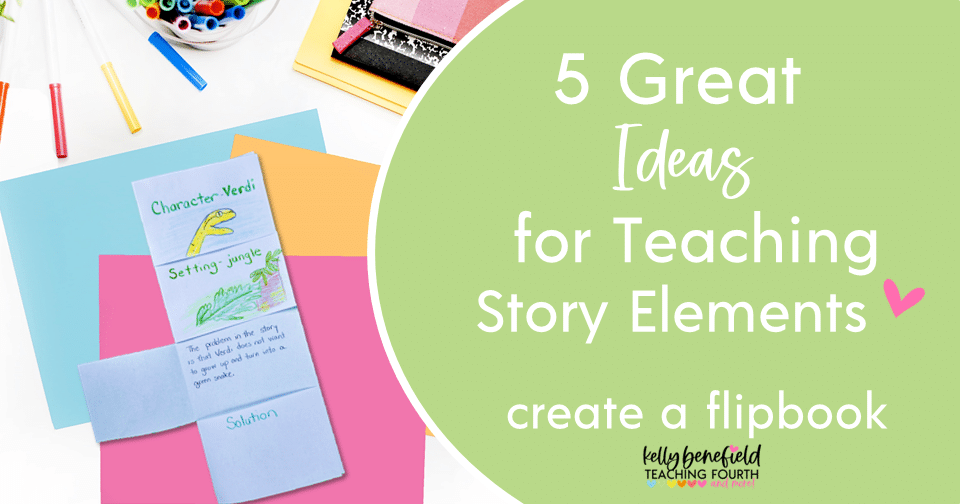
Graphic Organizers
Graphic organizers are an excellent tool when studying story elements. They enable students to break down the text and write about each element of a story. They help students organize the information about story elements in a visual way which enables them to better understand and comprehend complex concepts.
My Graphic Organizers for Fiction packet is filled with graphic organizers designed specifically for story elements. This proven resource is filled with over 200 graphic organizers and includes a wide variety of graphic organizers specifically for analyzing characters, setting, plot, and problem and solution. Teachers find it very easy to use, well organized, engaging for their students, and filled with resources they use year after year. It is a perfect investment for every upper elementary reading classroom.
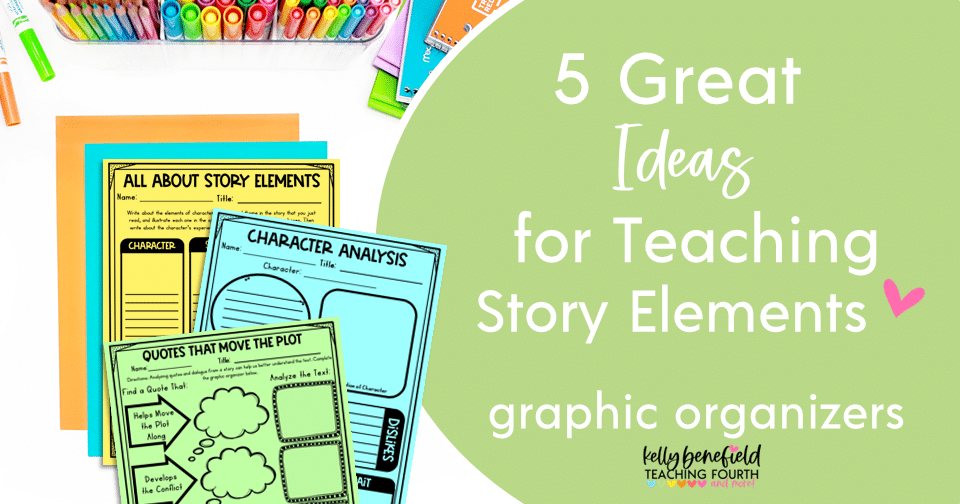
Use the SWBST Strategy and a FREEBIE!
The last favorite in this list of ideas for teaching story elements is to use the Somebody Wanted But So Then Strategy. Students simply complete a chart or graphic organizer to summarize the story. Each part of the SWBST strategy helps students to write about the story elements.
- Somebody- (Character) Who the story is about.
- Wanted – (Part of the plot) What does the character want?
- But – (Problem) What is the problem or conflict?
- So – (Solution) How does the problem get solved?
- Then – What is the result or outcome?
Click Here or on the image below to find a 4 page SWBST graphic organizer freebie!
For ideas on teaching sequence, check out my blog post HERE.


